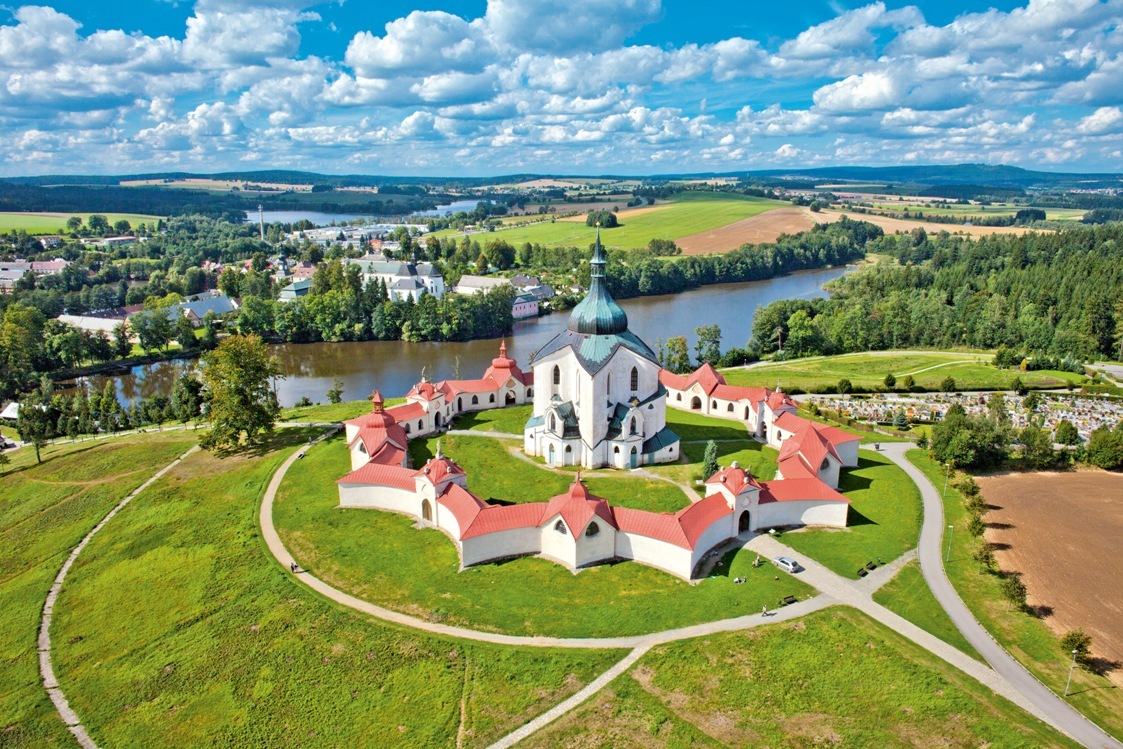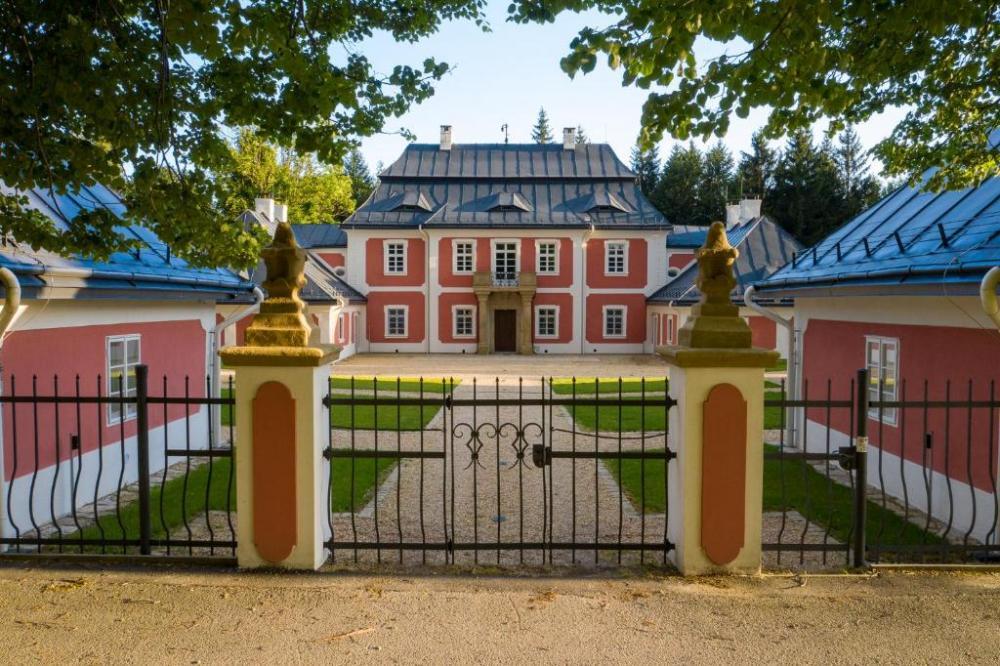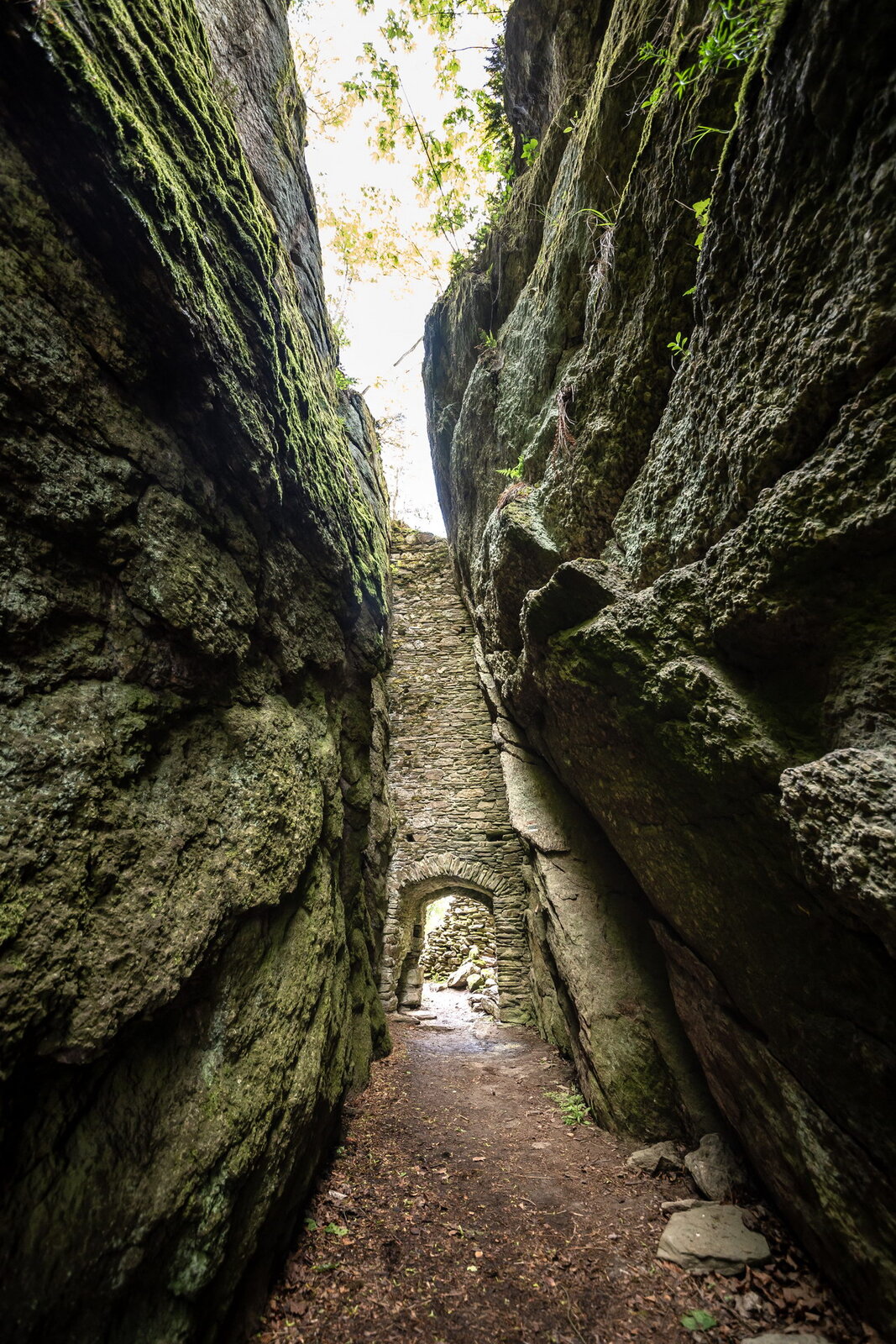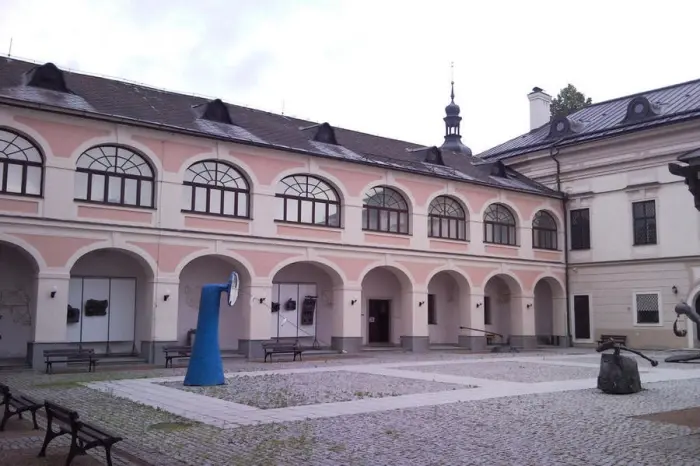Architectural attractions
Village heritage site Krátká
The village of Krátká, a local part of the Sněžné township in the Žďár nad Sázavou district, was founded in the early 18th century as a residential colony for forest workers. Despite its small size, Krátká exudes a magical charm.
Declared a village conservation reserve, Krátká features picturesque timber and brick houses with farm facilities. The small mountain estates are seamlessly integrated into the surrounding landscape. The predominant architectural style is half-timbered buildings, often with beams arranged in a cross shape. Most of the structures date back to the 18th and occasionally the 19th century.
more information : https://pamatkovykatalog.cz/kratka-7663914
map : https://maps.app.goo.gl/ZqyhrZJUccnPxQtK7
Unesco monument : Pilgrimage Church of St John of Nepomuk at Zelená Hora
This pilgrimage church, built in honour of St John of Nepomuk, stands at Zelená Hora, not far from Ždár nad Sázavou in Moravia. Constructed at the beginning of the 18th century on a star-shaped plan, it is the most unusual work by the great architect Jan Blazej Santini, whose highly original style falls between neo-Gothic and Baroque.
map : https://maps.app.goo.gl/YSRd6T2S5yon9uieA
more information : https://whc.unesco.org/en/list/690
Žďár nad Sázavou Castle
On the edge of Žďár nad Sázavou, not far from the provincial border, lies the Žďár nad Sázavou Castle. This extensive area was originally a Cistercian monastery founded in 1252. After the monastery was abolished in 1784, further modifications took place and the original monastery became a castle, which is now owned by the Kinský family.
https://maps.app.goo.gl/uDii6zr3QegC8tBQ7
Karlštejn Hunting Lodge
Karlštejn Hunting Lodge is a late Baroque complex characterized by its strict symmetry and elegant design. The main pavilion is a one-story structure with a double hipped roof, built in 1770 by Czech nobleman Filip Kinský, owner of the Rychburg manor.
Originally, the estate included two hunting grounds for deer and black game, which were abolished in the 19th century. In 1823, the Bavarian princely family of Thurn-Taxis acquired the lodge. It was expropriated by the Czechoslovak state in 1945 and declared a cultural monument in 1958.
After the fall of communism in 1989, the lodge returned to private ownership. It underwent extensive renovations between 2014 and 2020 and has since been opened to the public.
more information : https://www.zamek-karlstejn.cz/
map : https://maps.app.goo.gl/WGqhhG6oYM5puEHg9
Village heritage site Křížánky
The village of Křížánky is uniquely divided by the river Svratka into two parts: Czech and Moravian. It is a typical mountain settlement featuring scattered buildings that climb the surrounding hills. The architecture ranges from small wooden houses to large farms owned by wealthier farmers.
In the early 1960s, the architectural value of these buildings—representative examples of Horácko architecture on the Bohemian-Moravian border—was recognized. As a result, some of them were added to the Central List of Cultural Monuments. In 1995, Křížánky was declared a Village heritage site.
more information : https://obeckrizanky.cz/default/default/11334_turista
map: https://maps.app.goo.gl/dpbMvjjWmmpqtoL48
Veselý Kopec Open-Air Museum
The Veselý Kopec Open-Air Museum offers a vivid glimpse into the history of a traditional Czech village. Comprising nearly thirty structures, this so-called settlement features agricultural estates and smaller village buildings that transport visitors to the first half of the 19th century and the second half of the 20th century.
Highlights of the museum include a water grain mill, an old puppeteers' caravan, and an apiary. Regular fairs of various kinds are held throughout the year, adding to the lively atmosphere. Additionally, the museum is wheelchair accessible, making it a welcoming destination for all visitors.
website : https://www.nmvp.cz/en
map : https://maps.app.goo.gl/pN4QQeBrNe3xPK9Y9
Castle Nové Město na Moravě
Castle Nové Město na Moravě was built in 1589 on the site of an older fortress. In 1643, it was looted and repurposed for economic use. In 1699, it was acquired by a foundation of nobles in Brno, to which it belonged until 1945. After a devastating fire in 1723, the castle was abandoned but later rebuilt in the Baroque style within the same century. The castle we see today was remodeled in the Neo-Renaissance style in 1874.
Since 1964, the castle has housed the Horácká Gallery, featuring a permanent exhibition dedicated to Czech sculpture of the 20th century, landscape design, and Škrdlovice metallurgical glass. The gallery documents the work of the most significant figures in regional art, with extensive collections from the estates of Jan Lauda, Josef Mařatka, Vincenc Makovský, Karel Pokorný, and Jan Štursa.
website : https://www.horackagalerie.cz/home






![1637247366boy_4586[1]_700x466_-turisticky_cil-9-1637247366boy_4586[1]- 1637247366boy_4586[1]_700x466_-turisticky_cil-9-1637247366boy_4586[1]-](/res/archive/163/019582.webp?seek=1722946609)
